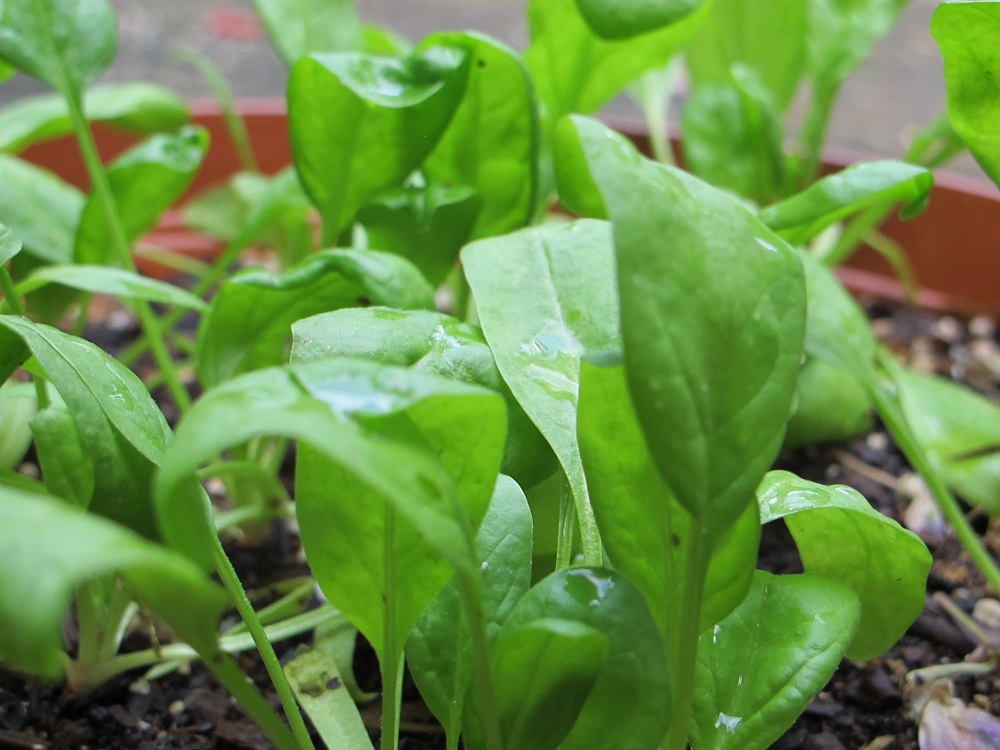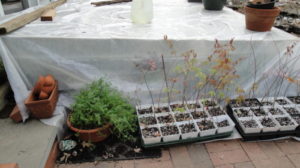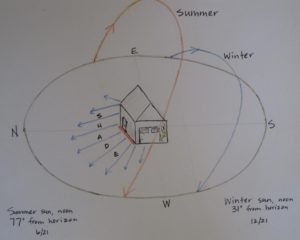Updated 9/28/2024
Find Your USDA Plant Hardiness Zone
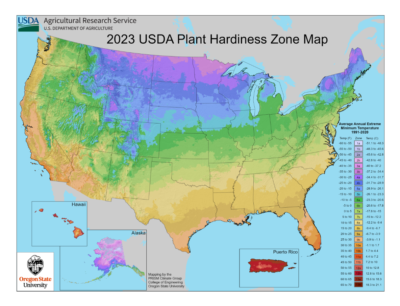
Throughout this blog and at other gardening sites, we often refer to a plant’s “hardiness zone”. Find your location on the map to identify your zone.
Since moving to northern North Carolina in 2021, I’m now in Zone 7b. Here, the average annual extreme minimum winter temperature is 5-10° F. My location is not far from the higher elevations of zone 6b (-5-0° F). According to the older 2012 map, where I live was clearly in zone 7a. Keep in mind, though, that this short snapshot in time doesn’t necessarily predict the trend in the timescale over the next thousand years.
At this USDA map website, enter your zip code to see if your area increased or decreased in the average extreme minimum temperature (the map loads slowly). Where I live, that temperature is 2° higher than it was in 2012. This does not mean that overall temperatures have increased an average of 2° F, just the lowest extreme minimum temperature.
Gardeners in other countries have similar systems of categorizing climate ratings.
Since I moved to North Carolina in 2013, we’ve had a few winters when the lowest temperatures fell almost to 0°F. We’ve also had a couple of seasons in the past few years when I rarely needed a winter jacket.
The 2023 map above replaces the 2012 map. Most zones of the country have been shifted upward a bit to reflect the slightly higher average extreme winter temperatures. But that won’t stop Mother Nature from testing the limits. These are averages, after all.
Microclimates
A microclimate that raises the temperature just a few degrees, compared to out in the open, can make a huge difference. Place the winter garden close to the south side (in the northern hemisphere) of the house, a solid fence, or the shed. There’s a little wiggle room in your USDA plant hardiness zone if you take advantage of warmer microclimates.
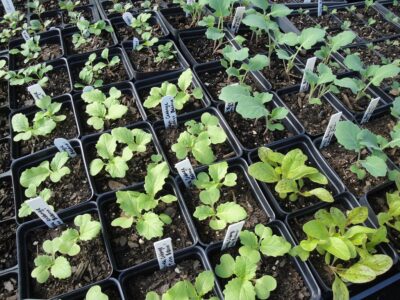
In late February of 2024, I placed flats of the first cool season greens of the year on the south/southeast side of the enclosed porch (photo, above). Here, they can grow where the temperatures are up to 3 or 4 degrees warmer at night than 15′ from the house, and they’re protected from the wind. Now that they’re well rooted, the brassicas and lettuces will tolerate freezing temperatures, within limits, before they’re sold or set into the garden.
The USDA Plant Hardiness Zone On the Label
Most vegetables, greens, annual flowers, and herbs are rated “cool season” or “warm (or main) season” plants. They are not generally assigned USDA plant hardiness zone numbers on their labels. Check with your local agricultural extension office for a planting timetable.
Parsley and cilantro, pansies and violas, kale and green onions are considered cool tolerant. Here, they thrive in cold autumn weather, and usually sail right through the winter in great condition. And some, such as collards, kale, and green onions, tolerate warm temperatures as well.
A particular variety of broccoli can be more cold tolerant than another, so choose varieties carefully. In this case, experience with a wide variety of named cultivars will guide you when choosing the best one to plant in March (‘Green Magic’, ‘Imperial’) or September (‘Arcadia’, ‘Kariba’). It all depends on your zone!
But basil, zinnias, and bell peppers are warm season plants and cannot tolerate frost or prolonged exposure to temperatures below 50°F. Depending on your climate zone, you’ll be able to grow tender sweet basil outdoors beginning somewhere between February and June.
Each tree, shrub, and perennial is given a zone number, an indication of how much cold it can tolerate in winter. A plant’s zone rating signifies the likelihood of its survival after an average winter. Some plants also are assigned heat zone ratings, which is helpful in hot climates.
Strawberries and raspberries, for example, are hardy in zones 3 or 4 to 7 or 8, depending on variety. Blueberries, as a group, have a wide range of temperature tolerance, growing in zones 3 to 10. Certain varieties, such as highbush and lowbush blueberries, grow toward the cooler end of the range, while rabbiteye blueberries are suited to the warmer southeastern U.S.
A Little More Protection
With simple materials, there are a number of ways to protect cool season greens in winter. From wind barriers to low tunnels to a cool greenhouse, some of these tips will work for you.
On very cold nights, cover with clear plastic sheeting to retain the heat gained during the daytime. Adding a string of miniature incandescent lights or a heat mat will raise the temperature even higher in a cold frame. Don’t forget to open the cover in the morning. Temperatures rise quickly inside a closed frame.
During bitterly cold or icy weather, the clear plastic sheets stay in place in the daytime, without over-heating the plants beneath the cover. Loosely drape the plastic over the crops, allowing excess heat to escape when the sun shines. All of our winter crops bounce back after a night of below-freezing temperatures. I loosely cover them at 25° F to prevent an interruption in their progress and damage to the foliage.
In late afternoon, I’ll secure the plastic if the nighttime temperatures are expected to drop below the low 20’s. Many of the cool season greens can survive with no winter protection in warmer zones. Each variety of cabbage, broccoli, or cauliflower, for example, has a more defined range of tolerance, so choose cultivars carefully.
Another option is to plant a dense evergreen hedge on the north or northwest side of the garden, or wherever your prevailing winter winds come from. Evergreens help diffuse and divert frigid winter winds.
The Sun’s Path
The sun’s zenith rises in the sky as summer approaches and begins to fall again after the first day of summer. Although the shortest day and the first day of winter is December 21, our lowest winter temperatures occur around the third week of January. Similarly, the hottest part of summer occurs a few weeks after the first day of summer.
As you plan the location of your vegetable garden, remember that a winter garden receives fewer hours of light. Try to orient it toward due south for the best exposure.
If there are deciduous trees south of the garden, you might actually get more sun in the winter, when the trees are leafless, than in the summer.
As an avid vegetable gardener, I will find ways to grow a few rounds of greens and vegetables all through the year. I’ll never move to a colder zone if I can’t grow my favorite greens there in winter. The average extreme minimum temperature creeping a bit higher on the thermometer makes it just slightly easier to succeed.
In addition to the plant’s hardiness zone, other factors contribute to success or failure in your garden. Time of planting, general health of the plant, ongoing care, and soil condition all have an impact. Start your variety selection with the plant’s hardiness zone, though, because that’s the one factor we can’t control.
